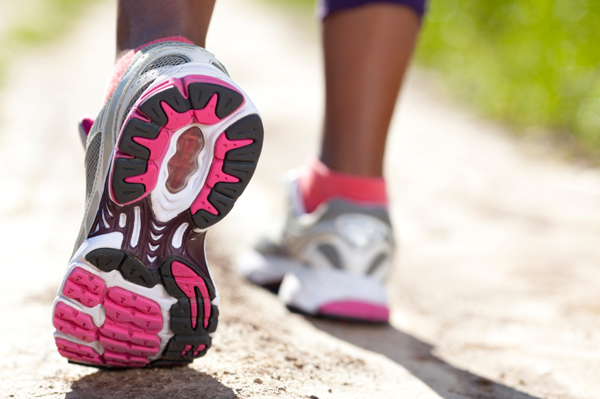Your feet take a beating just living everyday life. Add in your recommended exercise, and finding footwear to cushion and protect your feet becomes even more important. Treat your feet right using these tips as a guide.

Don’t get too attached.
Using shoes that are past their prime can lead to injury or painful conditions like shin splints. It’s not always obvious when your running or fitness shoes are worn out, as wear and tear on the inner cushion isn’t visible. As a general rule, replace shoes before you put 500 miles on them—about six months’ worth of 10,000 steps a day or running about 20 miles a week.
Play matchmaker.
It’s best to have a separate pair of shoes solely for exercise because you move differently when exercising than you do simply living your life. If you want to be more selective, you can choose a specific type based on the activities you do most often. For instance, walking shoes require less shock absorption than more lightweight running shoes; cross-trainers provide the side-to-side stability you need for aerobic exercise; basketball sneakers are designed for extra support and flexibility, and so on.
Be a smart shopper.
A good pair of sneakers will likely top out at about $100, but it’s worth it to make sure your feet are taken care of. It’s best to shop at a running store where knowledgeable salespeople can watch you run and walk, then help you select the right shoe for your gait. Try to avoid discount stores: Their shoes are often old (rubber degrades with time) and it can be difficult or impossible to get help with fit.
Get the right fit.
Another benefit of shopping at a running store: The salespeople can ensure you’re getting the right size. Our feet can grow with age and both feet aren’t always the same size, which often means that the size you think you should wear is wrong. Keep in mind, sneakers should always have extra room—about the width of your index finger—between the wall of the shoe and your big toe. The shoe should also be wide enough not to feel tight, with your heel snug enough to stay in place without sliding. Wearing athletic socks to shop for sneakers and going in the afternoon when feet are slightly swollen will help ensure you get the right fit. If you’re comfortable in the store, you’ll be comfortable exercising.
Also Read:
Could Barefoot Running Cost You Your Health?
The Dirty Side of Distance Running – What Every Newb Should Know
